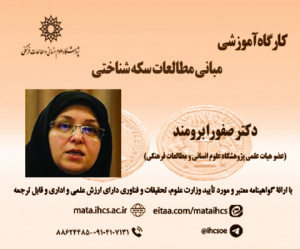انطباق پذیری راهبرد طرح نهضت ملی مسکن با نظام برنامه ریزی محله محور (نمونه موردی: شهر سنندج) (مقاله علمی وزارت علوم)
درجه علمی: نشریه علمی (وزارت علوم)
آرشیو
چکیده
مسکن یکی از اساسی ترین نیازهای زندگی انسان هاست و به عنوان کوچکترین عنصر تشکیل دهنده ی سکونتگاه ها تلقی می شود و همچنان به عنوان مهم ترین نیاز جوامع جدید شناخته می شود. تأمین این نیاز همواره برای اقشار آسیب پذیر حیاتی تر جلوه می کند. مقاله حاضر با هدف انطباق پذیری راهبرد طرح نهضت ملی مسکن با نظام برنامه ریزی محله محوردر شهر سنندج شکل گرفته است. روش تحقیق به صورت توصیفی - تحلیلی بوده و داده های تحقیق به روش کتابخانه ای و اسنادی و با استفاده از پرسشنامه جمع آوری شده .نتایج این تحقیق نشان داد : که برای ارائه استراتژی از روش ترکیبی سوآت- ای اچ پی بهره گرفته شد که ابتدا بخش کیفی و سپس بخش کمی سوآت انجام پذیرفت. پس از تعیین عوامل درونی و بیرونی و سپس تدوین استراتژی های 4 گانه بر اساس وزن دهی نسبی(AHP) و وزن دهی مطلق عوامل وزن دهی و سپس استراتژی ها تعیین ارزش شدند و بر اساس مقدار بدست آمده برای هر استراتژی اولویت آن مشخص گردید. استراتژی انتخابی در این تحقیق استراتژی WO می باشد که همان استراتژی انطباقی یا حداقل کردن ضعف ها و حداکثر استفاده از فرصت ها می باشد. استراتژی پیشنهادی اقتصادی محور و بر پایه برنامه ریزی بلندمدت و مستمر می باشد. .با توجه به اندازه واحدهای مسکونی ، یکنواختی الگوهای مورد استفاده در طراحی واحدهای مسکونی، خدمات و... (خصوصا در مجموعه سازی ها) به نظر می رسد خلاء های حاکم بر الگوی مسکن مزبور مورد توجه قرار نگیرد. تامین فضاهای عمومی و خدماتی در اینAdaptability of the strategy of the national housing movement plan with the neighborhood-based planning system (case example: Sanandaj city)
Housing is one of the most basic needs of human life and is considered as the smallest component of settlements and is still recognized as the most important need of new societies. Providing this need is always more vital for vulnerable groups. The present article was formed with the aim of adapting the strategy of the national housing movement plan to the neighborhood-oriented planning system in Sanandaj city. The research method is descriptive-analytical and the research data was collected by library and document method and using a questionnaire. The results of this research showed that the combined SWAT-EHP method was used to present the strategy, which first included the qualitative part and Then a quantitative SWAT part was performed. After determining the internal and external factors and then formulating 4 strategies based on relative weighting (AHP) and absolute weighting of the weighting factors and then the strategies were determined, and based on the value obtained for each strategy, its priority was determined. The chosen strategy in this research is the WO strategy, which is the strategy of adaptation or minimizing weaknesses and making the most of opportunities. The proposed strategy is economically oriented and based on long-term and continuous planning. Considering the size of residential units, the uniformity of patterns used in the design of residential units, services, etc. (especially in complex buildings), it seems that the voids governing the said housing pattern are not taken into consideration. Provision of public spaces and services in this







